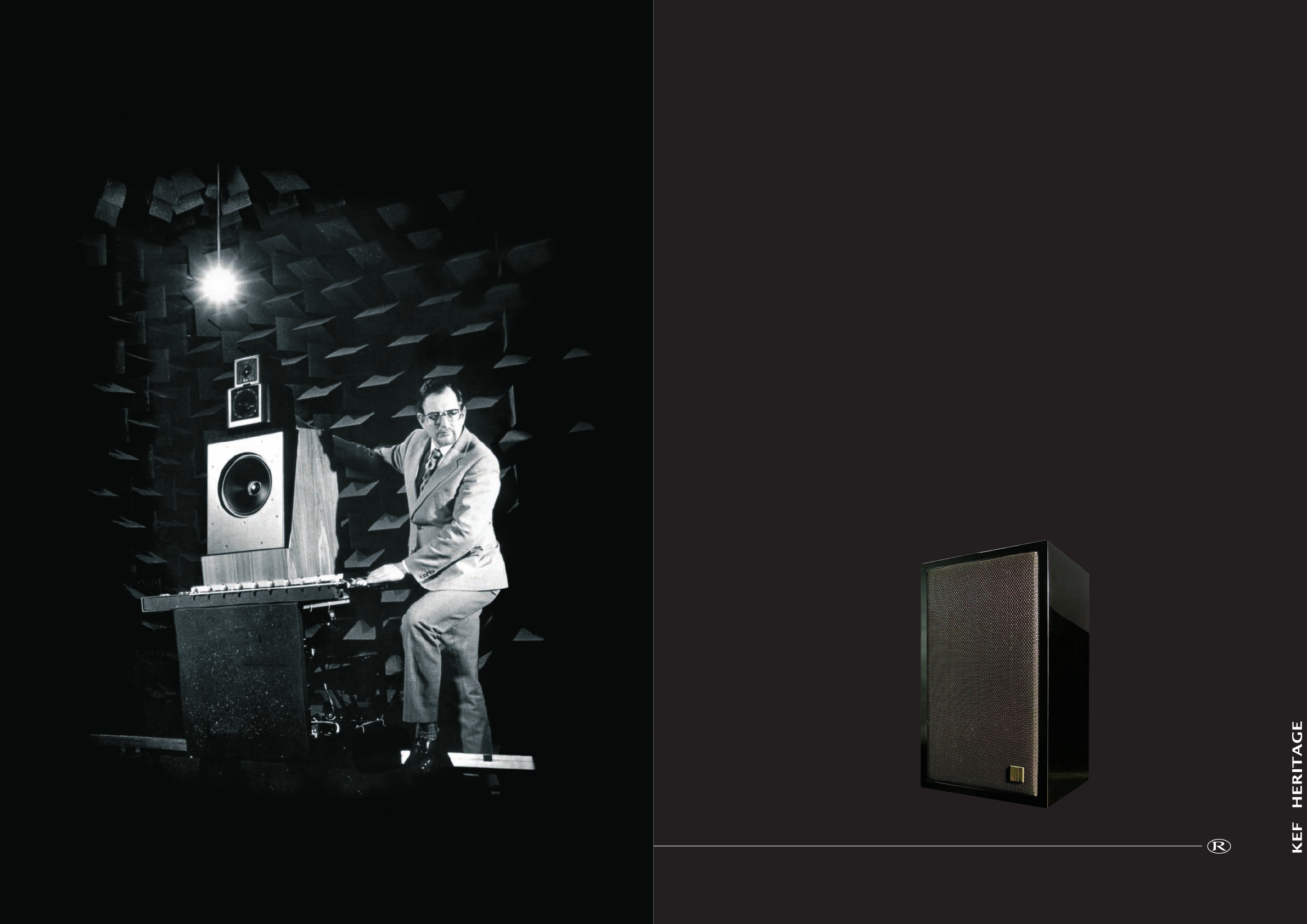
KEF was founded in 1961 by an electrical
engineer named Raymond Cooke in a Nissen
Hut on the premises of a metalworking
operation called Kent Engineering & Foundry
(hence KEF), on the banks of the River Medway,
near Maidstone in Kent.
From the beginning KEF was destined to become
a company with a flair for the unusual and
controversial in terms of loudspeaker
engineering, design, and use of materials.
Within a year, KEF, under Cooke’s outstanding
vision, was planning loudspeakers with bass units
using foil-stiffened, vacuum-formed, expanded
polystyrene diaphragms and a Melinex or Mylar
tweeter. This idea was manifested in the K1,
an immediate success, followed by the bookshelf
model, Celeste, a loudspeaker with an even
more significant commercial success and one
that helped secure the early financial stability of
the new company.
Re-establishing a previous relationship with the
BBC in 1966, Cooke was interested in adopting
another material, Neoprene (an artificial rubber)
to help maintain sound quality in the mid-band by
using it as the surround to the loudspeaker
diaphragm, while using new materials for the
diaphragm itself. Cooke was always looking for
new materials and settled on Bextrene as a
solution, as its lightweight plastic sheet-like
properties were flexible enough for shaping and
the material remained stable under varying
temperature and moisture conditions and was
smooth and consistent over a wide bandwidth.
As a result, in 1967, two new drive units, the 5in.
B110 and 8in. B200 appeared which, with their
countless applications, found use in some 3
million systems from KEF and many other
loudspeaker brands throughout the world.
A new, smaller tweeter also arrived, the T27,
which led to the most famous BBC/KEF
collaboration, the LS3/5A, of which some
100,000 units were sold world-wide.
During the 1960’s KEF flourished.
Loudspeakers such as the Concord,
Concerto and Cresta and then, in 1969,
the Chorale began to shape the company’s
growing reputation as ‘The Loudspeaker
Engineers’, a fact justly recognized in 1970 when
KEF received the first of two Queen’s Awards
for Export Achievement.
KEF Heritage
Photograph : Martyn Goddard. Courtesy Sunday Telegraph Colour Supplement.
43
K7262 REF 209208 Combined Manual_v2 12/2/08 12:40 Page 42


















